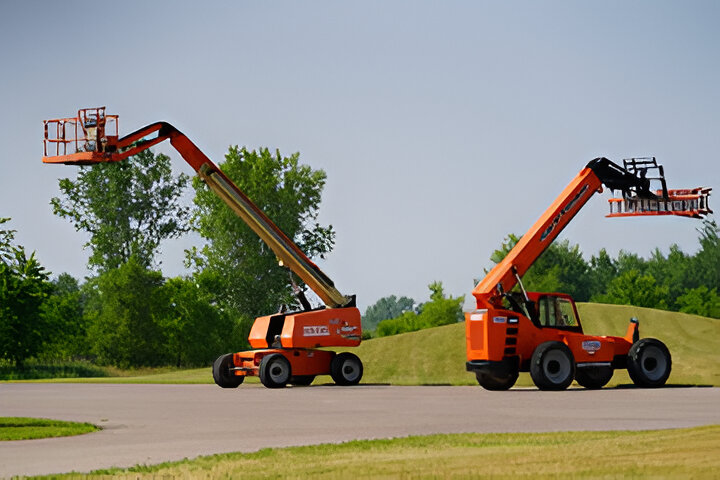A Comprehensive Guide to Aerial Lift Training and Certification Programs

In the dynamic world of industrial and construction work, the use of aerial lifts has become increasingly common for tasks that involve working at elevated heights.From maintenance and repairs to construction and installation, aerial lifts provide a safe and efficient way to access elevated work areas. However, operating these machines requires specialized skills and knowledge to ensure both the safety of the operator and those working in the vicinity. This is where Aerial Lift Training Certification Programs come into play.
The Importance of Aerial Lift Training.
Aerial lifts, including boom lifts, scissor lifts, and bucket trucks, present unique challenges compared to traditional forklifts or other equipment. Given the elevation and potential hazards involved, operators must be well-versed in the proper operation and safety protocols of these machines. Aerial lift training is designed to equip operators with the necessary skills and knowledge to navigate these challenges safely and efficiently.
Components of Aerial Lift Training Programs.
A comprehensive aerial lift training program covers various crucial aspects to ensure that operators are well-prepared for their responsibilities. These components typically include:
Theoretical Knowledge:
Understanding the principles of aerial lift operation, safety regulations, and the identification of potential hazards are fundamental aspects of the theoretical component. This knowledge lays the groundwork for safe and effective practical application.
Practical Training:
Hands-on experience is essential for operators to familiarize themselves with the actual operation of aerial lifts. Practical training includes maneuvering the lift, handling emergency situations, and practicing safe operating procedures.
Safety Protocols:
Aerial lift operators must be well-versed in safety protocols, including the proper use of personal protective equipment (PPE),fall protection, and emergency evacuation procedures. Safety awareness is a cornerstone of effective aerial lift training.
Equipment Inspection:
Knowing how to inspect and maintain the aerial lift is crucial for preventing mechanical failures and ensuring the equipment is in optimal working condition. This includes checking hydraulic systems, controls, and safety features.
Regulatory Compliance:
Aerial lift training programs should cover relevant regulations and standards set by occupational safety authorities. This ensures that operators are aware of and adhere to legal requirements, promoting a safer working environment.
The Significance of Aerial Lift Certification.
Aerial lift certification is a formal recognition of an operator’s proficiency in safely operating aerial lifts. Certification is not only a testament to an individual’s skills but also a requirement mandated by occupational safety regulations in many regions.Employers often seek certified operators to ensure that their workforce is adequately trained and can contribute to a secure working environment.
Aerial Lift Certification Process
A comprehensive aerial lift training program covers various crucial aspects to ensure that operators are well-prepared for their responsibilities. These components typically include:
Completion of Training Program:
Candidates must successfully complete a recognized aerial lift training program. These programs are often conducted by certified trainers and cover both theoretical and practical aspects of aerial lift operation.
Written Examination:
A written examination assesses the candidate’s understanding of theoretical concepts, safety protocols, and regulatory compliance. Successful completion demonstrates a comprehensive grasp of the material.
Practical Evaluation:
Candidates undergo a practical evaluation to demonstrate their ability to operate an aerial lift safely.This evaluation includes tasks such as maneuvering the lift, responding to simulated emergencies, and conducting equipment inspections
Issuance of Certification:
Upon successful completion of both the written examination and practical evaluation, candidates receive an aerial lift certification. This certification is typically valid for a specified period, after which operators may need to undergo refresher training to renew their certification
Benefits of Aerial Lift Certification
Aerial lift certification offers several benefits to both operators and employers:
Enhanced Safety:
Certified operators are more likely to adhere to safety protocols and best practices, reducing the risk of accidents and injuries.
Regulatory Compliance:
Employers fulfill regulatory requirements by ensuring that their aerial lift operators are certified, avoiding potential legal issues and fines.
Improved Efficiency:
Certified operators are more proficient in the operation of aerial lifts, leading to increased productivity and efficiency in the workplace.
Risk Mitigation:
Certification programs emphasize risk identification and management, reducing the likelihood of accidents and minimizing potential
damage to equipment.
Choosing the Right Aerial Lift Training Program
When selecting an aerial lift training program, it is essential to consider several factors to ensure that the training meets industry standards and regulatory
requirements:
Accreditation:
Choose a program that is accredited by recognized organizations in the field of occupational safety. Accreditation ensures that the training program meets established quality and safety standards.
Comprehensive Curriculum:
A good training program should cover all essential aspects of aerial lift operation, safety, and maintenance. Ensurethat the curriculum aligns with industry best practices.
Qualified Instructors:
Trainers should be experienced and certified in aerial lift operation. Their expertise contributes significantly to the quality of the training.
Practical Training Facilities:
Adequate practical training facilities with well-maintained equipment are crucial for providing hands-on experience. Practical training should replicate real-world working conditions as closely as
possible.
Regulatory Compliance:
Verify that the training program complies with relevant occupational safety regulations and standards. This ensures that the certification obtained is recognized by regulatory authorities.
Conclusion
equipping operators with the skills and knowledge needed to navigate the challenges of working at elevated heights safely. Aerial lift certification not only validates an operator’s proficiency but also ensures compliance with regulatory standards.
Choosing the right training program is paramount to the success of the certification process. By considering factors such as accreditation, curriculum comprehensiveness, instructor qualifications, practical training facilities, and regulatory compliance, individuals and employers can make informed decisions that contribute to a safer and more efficient workplace.
Investing in aerial lift training and certification is an investment in the well-being of the workforce and the overall success of industrial and construction projects. As the demand for skilled aerial lift operators continues to rise, staying ahead through comprehensive training is key to mastering heights and ensuring a secure and productive work environment

